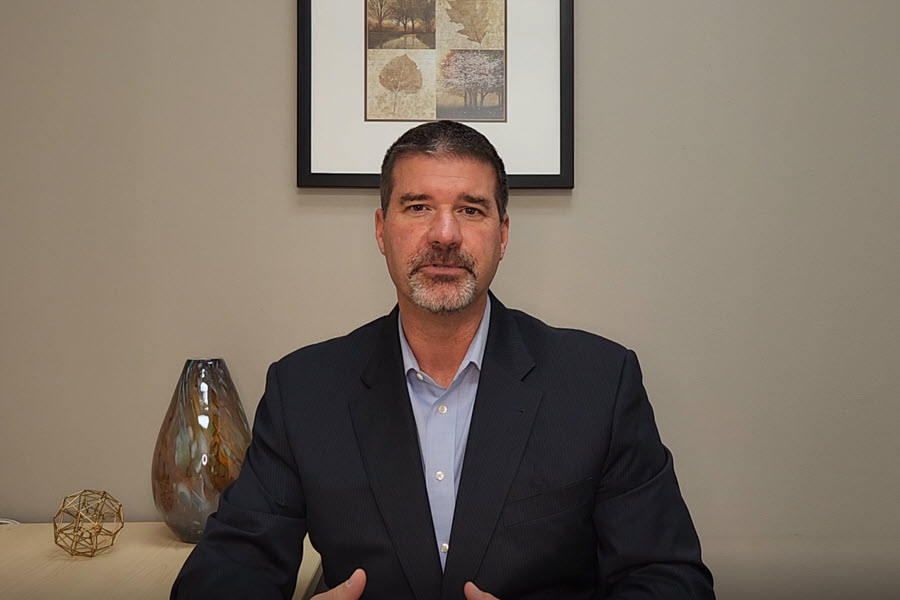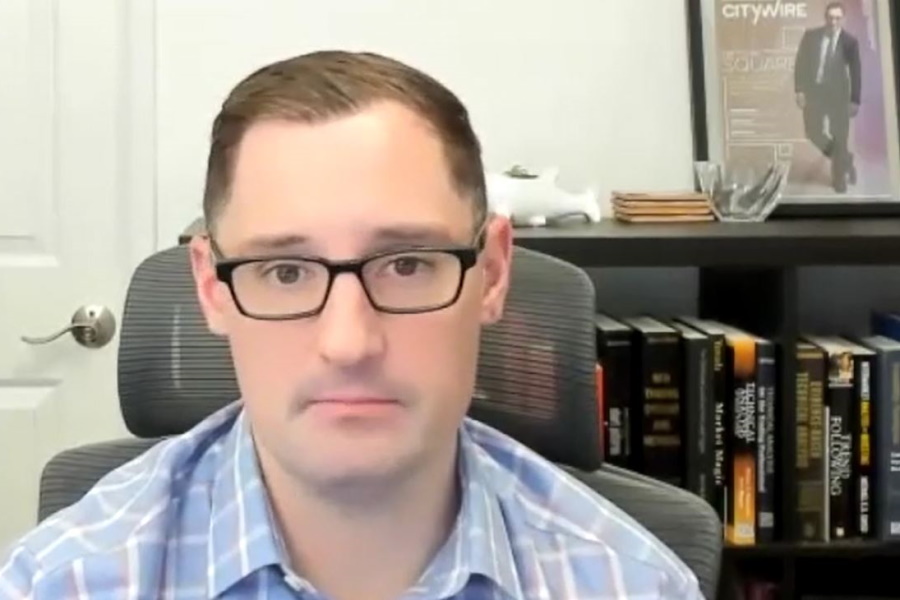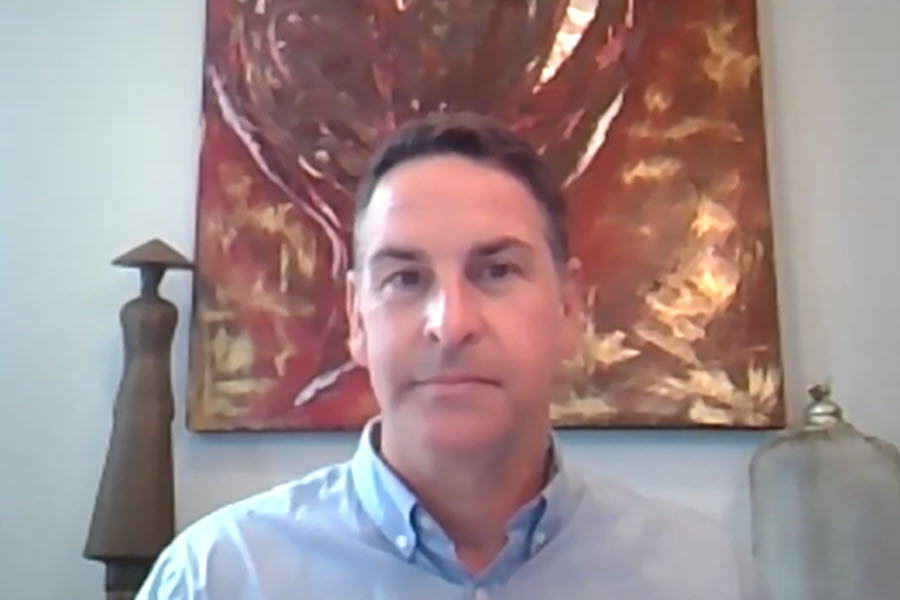Managing Active Bond Ladders: An Interview with Kevin Roche

Many RIAs have shifted to become more active in their fixed income management and pivoted away from the “set-it-and-forget-it” bond ladder. In taking a more proactive approach. RIA’s like LHT Consultants are actively repositioning based on market dynamics and can therefore maximize their client’s income stream while still staggering maturities to decrease interest rate risk. IMTC’s Patrick Duffner sat down with LHT Consultant’s Kevin Roche to discuss how LHT is offering active bond ladders to their clients and what that means for portfolio positioning given the current market environment. Kevin also shows us how he is using IMTC to manage his bond ladders more actively.
Positioning client portfolios in the current market environment
Patrick Duffner (PD): Kevin, thanks for joining us today. We have Kevin Roche coming here to talk to us about the fixed income markets, which he is very suited to talk about given his background as a portfolio manager in the high yield space, and also as the CEO and founder of LHT Consultants. Kevin, thanks for joining.
Kevin Roche (KR): Thanks, Patrick. I appreciate it. So we’ll get right into it.
PD: One thing I want to talk to you about is, how are you and your firm LHT Consultants looking at the current state of the market?
KR: Well, I think there’s been a lot of noise in the markets overall, specifically in the credit markets. And for the first time, what we’ve seen is the high yield, high yield rate, or the yield on high yield, is actually lower than what we’ve seen for the inflation rate. So with yields of 4.57% versus the inflation rate that we saw in May, as exhibited by the CPI of 5%. Now, that really brings a lot of concern to investors about locking in a loss, or, essentially, you’re unable to generate a return that that meets or exceeds inflation. And that’s the first time that it’s happened historically.
PD: So I mean, by a good place to jump into, I know personally, we are seeing the effects of inflation in our day-to-day lives. And that’s coming from vehicle costs to housing prices. Do you see yields moving lower from here? And how do you think inflation is going to affect those?
KR: I don’t really see yields moving additionally, too much further from where they are now, I think, I think when we look at Treasuries, we have to think about a couple of different things. We have to think about the Fed’s activity level in their buyback program that they’ve they’ve instituted since 2020, since when the pandemic started. And the question that you’re going to see as the economy has been opening up is, the equity markets are telling us that there is inflation and that there’s an appetite for others and appetite for risk. But that risk is actually somewhat artificial because we’re seeing investors reaching for yield. And as the Fed continues with the buyback program, reaching for yield will put investors into other areas to generate that return. When we talk about inflation in general, and the expectation of goods going forward, how do we as investors really try and mitigate our risk and try and profit or generate returns from that? And that’s really been the big question. But you cannot really answer that unless you have a little better outlook of what the Fed is going to do with regards to rates, which they’ve, they’ve hinted at keeping here at these levels because they view inflation as transitory, which would mean that they would revert back to a median or there would be a reversion to the mean. And the other part is just how active they want to be with regards to this buyback program.
PD: Interesting. So given what’s going on with inflation and rates, and the Fed, and obviously, you as someone who’s managing high net worth individuals, and they have a demand for yield. What are you doing in client accounts? And what’s attractive here?
KR: Yeah, so I don’t want to paint the picture that that everything is bad with what the Fed has been doing, I think the Fed has actually helped from a monetary policy of opening up the economy and making things improve. And I think bringing everything down the line, it actually helps companies and helps the economy overall. From the standpoint of fixed income, it actually helps with reducing the possibilities of defaults, especially if we’re talking about high yield. The other part that’s interesting is we’re looking at kind of rising stars in this sort of environment. So we’re looking at upgrades for companies in general, which would reduce the bankruptcy risk associated with them, and all ultimately, allow people to want to pay more for that reduction in risk of bankruptcy to generate some sort of yield. So we’re looking at some of those credit upgrades opportunities. We’re also begging or asking the question of the market, whether it is better to take additional duration risk, meaning that we want to go farther out on the yield curve, and subject investors to interest rate sensitivity. Or if we’re looking for a little bit more credit risk. Either one that you choose, there’s oftentimes a trade-off in yield. So now we actually look to try and marry those opportunities between having a combination of a potential upgrade. So looking at some of double B credits, but also looking with some of the investment grade corporates and taking a little bit more of a duration or longer maturity view with some of those opportunities.
PD: Thanks for that. It sounds like you’re actively managing your clients’ accounts, and specifically your fixed income exposure. So we get to the next question is how are you positioning your fixed income? How are you positioning the exposure to fixed income and allocation in their balance sheet?
KR: Yeah, so the way that we like to position clients subject to certain objectives of each of those individuals or accounts is that we try and marry the two. So we look at a ladder bond portfolio, clearly, we are targeting a specific yield, in general for the client. At this point, you know, we’re actually we’re looking at a combination of three things, we’re looking at some floating rate opportunities, if possible. And something that would kind of keep pace with inflation, we also are looking for some of the shorter dated, so we might look and kind of the medium to intermediate-term, lower-quality credit, and then, you know, the bulk of it is still going to be in quality. So we’re looking into that investment grade, little longer duration to kind of pick up some of that yield. But if there was some sort of a risk to the market or any additional news that we see where the economy is, at risk of slowing or shutting down for a period of time, the downside to that is limited to the extent of the credit quality of the issuer.
PD: Great. So selfishly, I’m asking you the question, what, and how are you leveraging the IMTC platform to take those active strategies and specifically that active bond ladder that you mentioned?
KR: Right? So the thing we like about IMTC is that we can put in some parameters of what we’re trying to achieve. And we then can search through that screening tool, and we can start to select credits. Being an active Portfolio Manager for many years, selecting the credits, selecting areas of a capital structure are equally as important. But having the ability to generate some sort of a universe or an investable universe with certain criteria. And then using that to try and create the most optimized or optimal portfolio is really where IMTC has helped us.
PD: Well Kevin, thanks so much. Really appreciate your thoughts on the market, fixed income market, the Fed, and especially how IMTC’s helping you out.
KR: Thanks, Patrick. I appreciate the time. Thanks.
Using IMTC to actively manage bond ladders
IMTC’s fixed income portfolio management solution is built for asset managers to provide customizable bond accounts at scale to their clients. The technology has enabled RIA’s to be more proactive to maximize returns for their clients. Kevin leverages the below tools on IMTC to achieve his active bond ladders at scale:
- Targets: Set your overall duration and how you want to be positioned across the curve; the system quantifies where you are over/underweight across portfolios to enable you to take action at scale.
- Compliance: Create rules and desired portfolio positioning at a strategy level or to an individual portfolio to provide customization at scale.
- Buy-lists: Access live offerings available through the system or your own live offers and see all bond characteristics with the ability to apply and save custom filters to decrease fragmentation and automate redundant tasks.
- Optimization: Optimize accounts for compliance and targets to reflect your parameters while setting an investment objective (ex. maximize tax-equivalent yield) and allowing for turnover, if desired. Unique to the IMTC system, the fully customizable optimization engine automates your daily portfolio management tasks of sourcing bonds that best fit the portfolios, while also maximizing yield.
KR: So what tools do we leverage from the IMTC platform? Well, we use a lot of it actually. Being a former active portfolio manager, it’s inherent to look at things dynamically. So when we look to is we look at the target module to achieve not only the overall duration target but what we want to have position across the curve, which we think is pretty key. In regards to the laddered portfolio approach to the maturities that we have presented to us or work to the client. You know, we also look at things with regard to the objective, and with that, the compliance module allows us to target specific rating allocations which we think is pretty important. What we’re trying to achieve within this certain band for the client. And then obviously we have buy lists, we have an optimizer that we’re looking at for our universe. It allows us to look at kind of this live inventory that dealers are offering out there and what we tried to do is take that married with our portfolio views to help achieve this optimal outcome for our clients.





